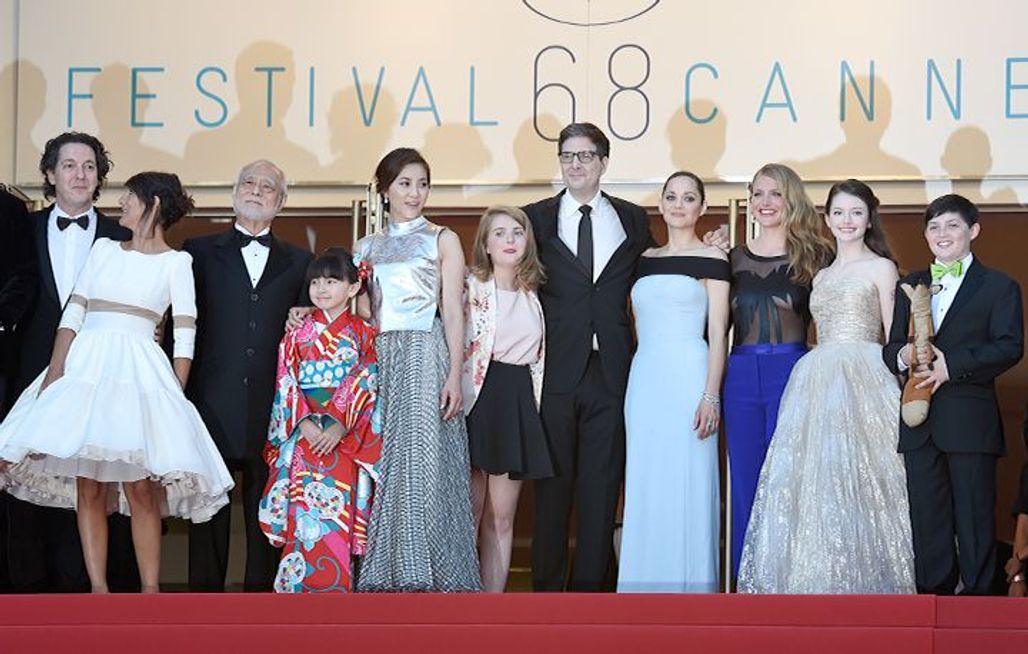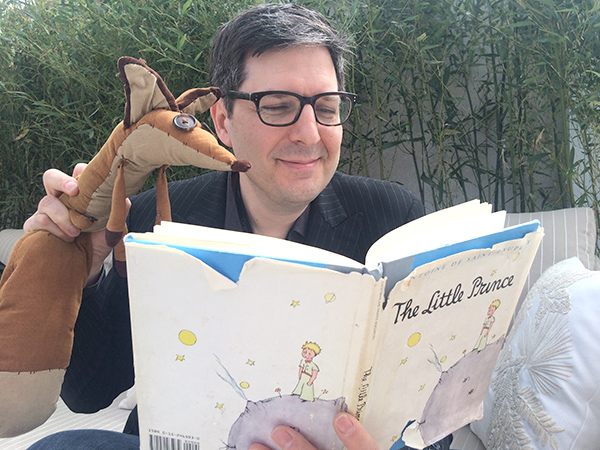
OUT OF COMPETITION – Mark Osborne “I wanted the film to be about how the story can affect your life”

The Festival has gone back to childhood. Mark Osborne is presenting his revisited version of the Le Petit Prince (The Little Prince), while managing to remain faithful to Antoine de Saint-Exupéry’s daydreams and philosophy.
What does The Little Prince mean to you?
My wife gave me my first copy, I have had it for decades. At the time, we were having a long distance relationship. It was very difficult, we wanted to be together but we couldn’t. She gave me the copy of the book that she had had as a child as a way to keep us connected. It came at a perfect time for me because I was studying animation and I was trying to find my way as an artist. It actually helped me to reconnect with my childhood and children create without thinking. I wanted the film to be about the connection with a story and how the story can change you and affect your life.
Mark Osborne and the book his wife gave him © FDC / TK
A screen adaptation seems to be a big challenge. How did you revisit the story?
I didn’t want to just adapt from page 1 to page 100. I wanted to adapt the emotional experience that one has when reading the book. I tried to find out what the common experience was, and it was that people have an emotional reaction. It taps into different aspects of your life. I wanted to find a cinematic equivalent to the emotional experience.
So you took liberties with the original story?
I wanted to widen the story around the book to pay tribute to the book. When I looked into the story, I wanted it to be very pure, very true to the book. I widened the story to be about a little girl’s experience and how the book inspires her and her darkest fears. I wanted to tell this significant story about her relationship with the aviator who shares the story with her. I thought it was impossible to turn this book into a film and I found a way to make a tribute.
Why did you choose to mix digital and stop motion?
I’ve always used different media to represent different states of mind. That’s the magic of animation. I’m always looking for different ways, different aspects of the story. This became the perfect way to protect the book because I couldn’t use only CG which is very grown-up. Handmade things are at the heart of childhood. It’s the antedote to the grown-up world. That was the perfect way to express this contrast.
How did you choose actors for your characters’ voices?
Everybody loves the book. So I was able to go out to the greatest actors in the world, in every place. It’s very exciting. When I devised the Aviator’s character, I couldn’t think of who the voice could be and it was actually my writer, Irena Brignull, who said “I was thinking of Jeff Bridges”. And once she had said that, I couldn’t think of anybody else. He already knew the book so he was skeptical but I was very lucky. I hired him. I embraced the idea that we were protecting the book. He was incredibly generous and he loved the story. He loved what we were doing with the film. And all the different actors like Ricky Gervais, James Franco, Benicio Del Toro, they were very committed to what we were attempting to do and the ambition of what we were doing. I really thought it was an opportunity for them to do something different and unique. Albert Brooks loved playing the Businessman. He had an idea for the Businessman. I had a great experience. Even Marion Cotillard, I mean how incredible for me to be able to work with someone like her. She had a connection. She used to play the Rose when she went to children’s hospitals. My process is very collaborative. I really offer these actors an opportunity to create the characters. And Mackenzie Foy who plays the little girl is such a talented actress. She was able to be a kid but could also think like an actress. She carries the film.
Interview by Tarik Khaldi
SCREENINGS
Friday 22nd May / Grand Théâtre Lumière / 11.30am – 7pm
>> View the interactive calendar



